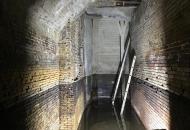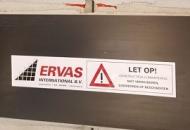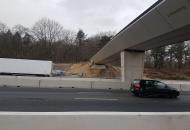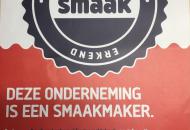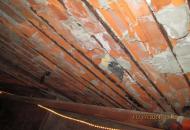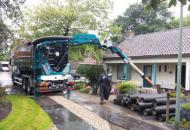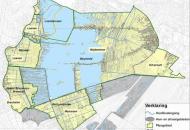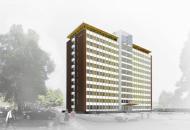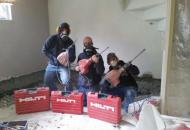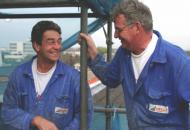Gfrp Rods for Wood Repair
In order to make constructive connections, for pinning and reinforcing wooden (and concrete) elements. Typical applications are applying reinforcements and/or connections in joists, purlines, roof timbers, rafters, trusses, clamping elements, lintels, thresholds, pillars, frame saws and other


wooden structures. They may be used specifically for joist end restoration or making wood prostheses (and obviously may be anchored into concrete as well)
Ervas 100 gfrp glass fiber reinforcement rods may be used with epoxy glues to connect the rod to the element or connect the elements among each other.
Ervas 100 gfrp rods for wood repair
- Ervas 100 gfrp rods are glass fiber reinforcement rods for construction.
- They are fully inert, non-corrosive, non-conducting and are only one quarter the weight of a steel rod.
- In terms of properties, they relate more closely to wood, than steel does as far as elasticity modulus, expansion and shrinkage are concerned.
Properties
The glass fiber reinforcement rods are composed of a bundle of tied up glass fibers (type e) which are impregnated in a vinyl ester resin. The rods have a spiral-shaped winding and are sanded in to improve the adhesion with the epoxy, the wood or the concrete.
Shifting of the adhesion (between rod and epoxy)
For technical details and download of this, go to Technical data Ervas Adhesive Reinforcement.
Application in case of restoration of joist ends
Shore up the joist to prevent tilting, shifting or collapse.
To clear the joist end from the surrounding brick work: a space of at least 25 cm around the joist end must be cleared.
If necessary, the joist must be placed at its original (or the desired) height.
Remove all the affected and weakened timber. All the wood within 10 cm of the connection must be free from rot. If necessary, saw off the fully affected joist end. The condition of the adjoining wood must be checked with a couple of test drillings.
Set the Ervas 100 gfrp rods to the desired length. See processing and installation below. Until using them, keep the rods dry, pure and free from oils from hands or tools. If necessary, purify the rod with acetone.
Drilling 3 holes with a 25 mm of 30 cm (in lengthwise direction) in the wooden joist. Avoid drilling holes within 4 cm of surface tears. Discuss the positioning of the holes with the project engineer.
Blow all the dust from the drilled holes and fill them with approved epoxy resin.
The rods of Ervas 100 gfrp are necessary to ensure a good mechanical connection between the prosthesis and remaining joist.
If necessary, for esthetic reasons, you may apply a lost frame in the same type of wood as the original joist in the right place. In other cases, apply the frame in such a way that this may be removed again after the work is finished.
The timber must be dry and during processing must have a low level of moistness. Protect the working area against moisture so the epoxy may harden well.
Fill the frame with slowly hardening shrink-free mortar.
After hardening of the epoxy mortar, the smooth frame is removed. the wood may then be treated, molded and colored in function of the original joist wood. The lost frame will obviously remain in place.
After 7 days, the shores may be removed and the joist may be loaded again.
Processing and installation
It is advised to wear working gloves when processing and placing glass fiber reinforcement rods. These may be set at the correct length using a grinding disc. Wearing a dust mask and safety goggles are highly advised.
Reports available for inspection.
The values given are indicative and are provided without warranties. Ervas International BV accepts no liability arising from the use of these data.
For technical details and download of this, go to Technical data Ervas Adhesive Reinforcement


